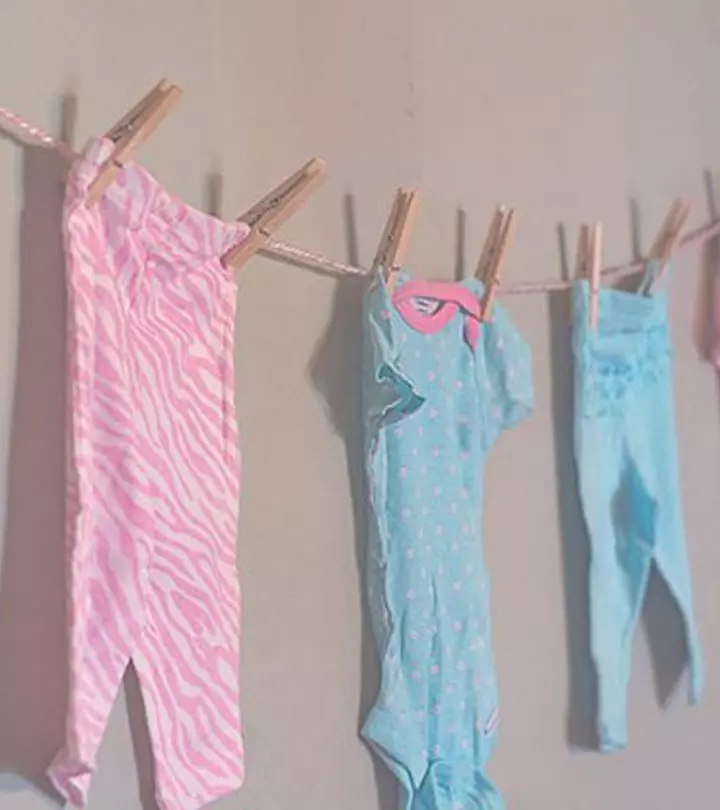

Image: ShutterStock
The stereotype around raising children in ways that are in the current times gender-specific was pretty much unknown during the times when we were growing up. At least not in this part of the world. Not in our oriental set up. The only times we could get concerned were if a little boy would want to wear girls’ outfits or wear make-up. We would not think that in wearing a pink shirt or playing with a pink toy would make him encroach girls’ terrain, for that matter.

Globalization and baby retail has done some damage to the progressive belief system, I guess. Yes, progressive. Because if it is not we adults, who else could indoctrinate babies into gender-bias? I bet the world is producing more sexists in raising babies with pink assigned to girls and blue assigned to boys, which I find appalling of course. I mean, I could go across the length and breadth of America and still not find a pink onesie for a baby boy. And why shouldn’t I dress him in pink? Babies are pretty much outside the realm of understanding what being a boy or a girl is like. Nor should distinguishing them as a boy or a girl matter when they are too small to change their diapers on their own. They are cute enough to be adored in every respect. Moreover, pink looks good on both boy and girl babies. They look like roses. And roses have no gender, or do they?
It never mattered that pink socks that big sister was wearing were being passed on to the little brother. Or that a girl could borrow her brother’s boyish toys – she would swap a Spiderman for Barbie for a day. We were raised with the habit of sharing stuff with siblings and friends and we grew up to be men and women. Nature taught us when to withdraw and draw the boundaries. Yet, we have cubicles demarcating baby boys and girls separately in Toy-store. But as adults, we are quite content going to unisex salons or wearing unisex clothing! Adult men can wear a pigtail and women could spike their hair. So, something is seriously wrong, and it is gouging off the innocence of childhood.
Recently when Sweden made a major leap regarding addressing the issue, they virtually spun off a revolution. Last year they adopted a gender-neutral personal pronoun ‘hen’ to their vocabulary. In fact, a clothing company in Sweden has taken a more gender-neutral approach by shunning its boy’s and girls’ designated sections. A similar approach was also taken by a toy catalog in Sweden that featured a Spider-Man costume pushing a pink baby carriage.
While the Swedes have welcomed the change in parenting style, the same hasn’t gone down well with their American counterparts. The United States is still skeptical about the gender-neutral approach. While some believe that the new approach is a great way for a child to know his or her true identity, some believe that it might harm the child socially in alienating him. In Toronto, a couple has chosen not to reveal their three-year-old’s gender as an extreme measure towards being progressive. But if you were one of those who wanted to tread the path carefully, yet on a softer note, here’s how you can take the gender-neutral approach towards raising your child and the benefits of it:
1. Allow your children to pick clothes of their choice. It doesn’t matter if your girl wishes to dress up as a Superman to school or if your son dons a Cinderella. Let them play with toys irrespective of whether they are labeled ‘for boys’ or ‘for girls’. Keep their decor neutral as well.
2. Be careful with the activities that might appear stereotyped. It’s not just dads who mow the lawn. Moms do that too. And it’s not always moms in the kitchen. Dads could be kind helping hands in there.
3. Your child will have the benefit of getting over the artificial barriers that society creates around them and has more avenues to explore. Limiting them to ‘organized’ and ‘categorized’ boxes and stuff that read ‘boys’ and ‘girls’ might help us in identifying or arranging for goods, but it might keep the child far from being happy in something that might give him or her the joy of freedom.
4. As these kids grow up, they have lesser problems with the opposite sex. It might also help develop compassion and solidarity for peers irrespective of their gender.
5. It also turns out that 85% of gender non-conforming youth identify themselves as heterosexual in adulthood, according to the journal Pediatrics. In fact studies have also found that homosexuality is the result of genetics and biology, and that environment while growing up doesn’t influence one into the sexual orientation.
Having said these, gender-neutral raising has drawn criticism in the following ways:
1. Fran Walfish, a psychotherapist from Beverly Hills, believes that gender and sexuality help one in his or her identification. Without gender, a child cannot grow with a clarity into a full person, is what he believes.
2. Gender-neutral parenting can difficult in social situations or in a social set up such as a playschool where boundaries have already been drawn.
3. Your child might expect some bullying or be teased for behaving unlike his or her gender. Teasing is a major issue at many places.
So what you must do:
1. Watch for any signs that seem abnormal.
2. Prevent your child from being obsessed with things that are totally not apt for his or her gender; but at an appropriate age.
3. Ensure that your child understands his or her true identity towards adolescence.
4. Don’t ever expect that you are raising a gender-neutral baby for social change.
Community Experiences
Join the conversation and become a part of our nurturing community! Share your stories, experiences, and insights to connect with fellow parents.












